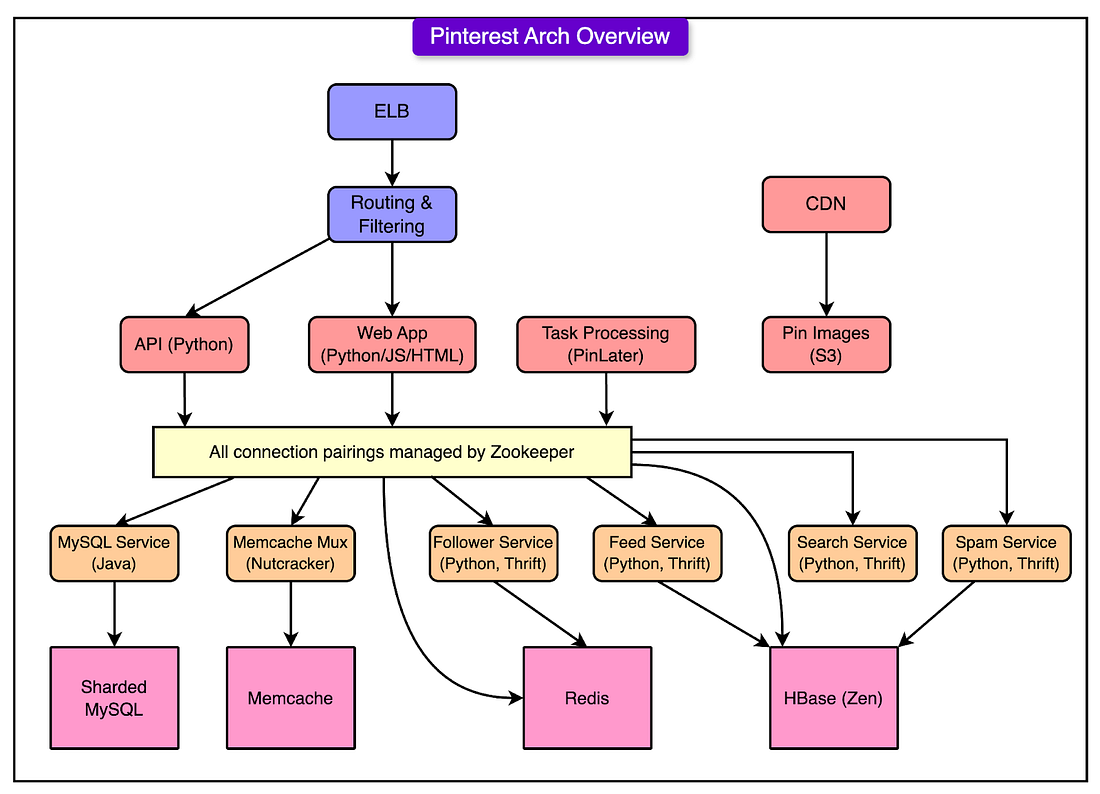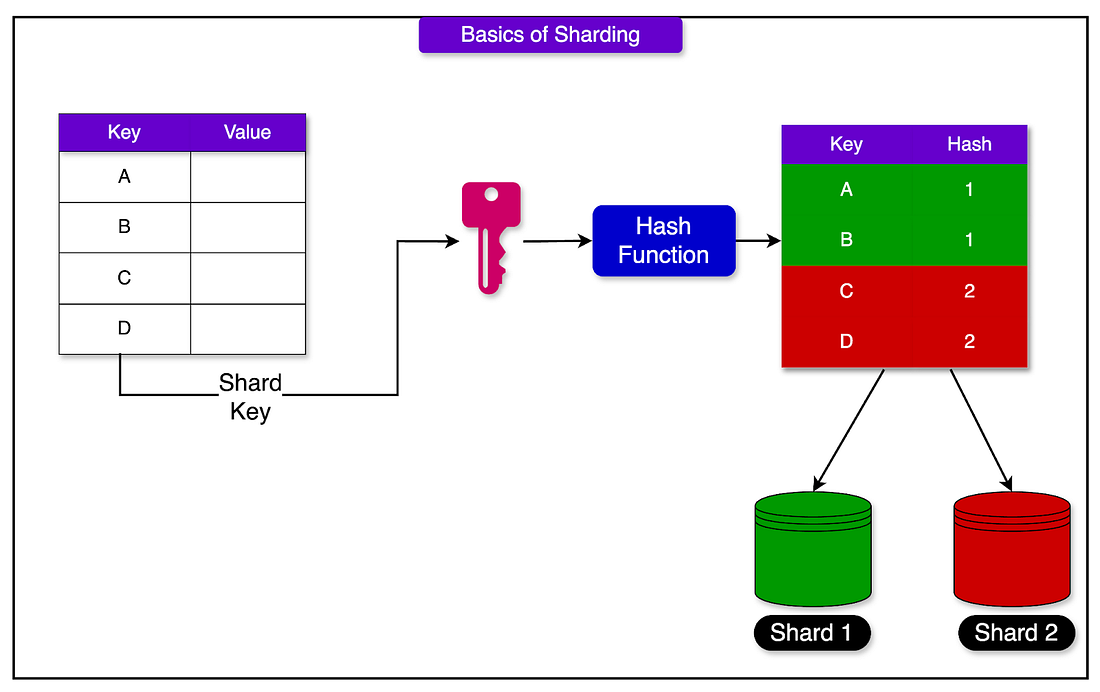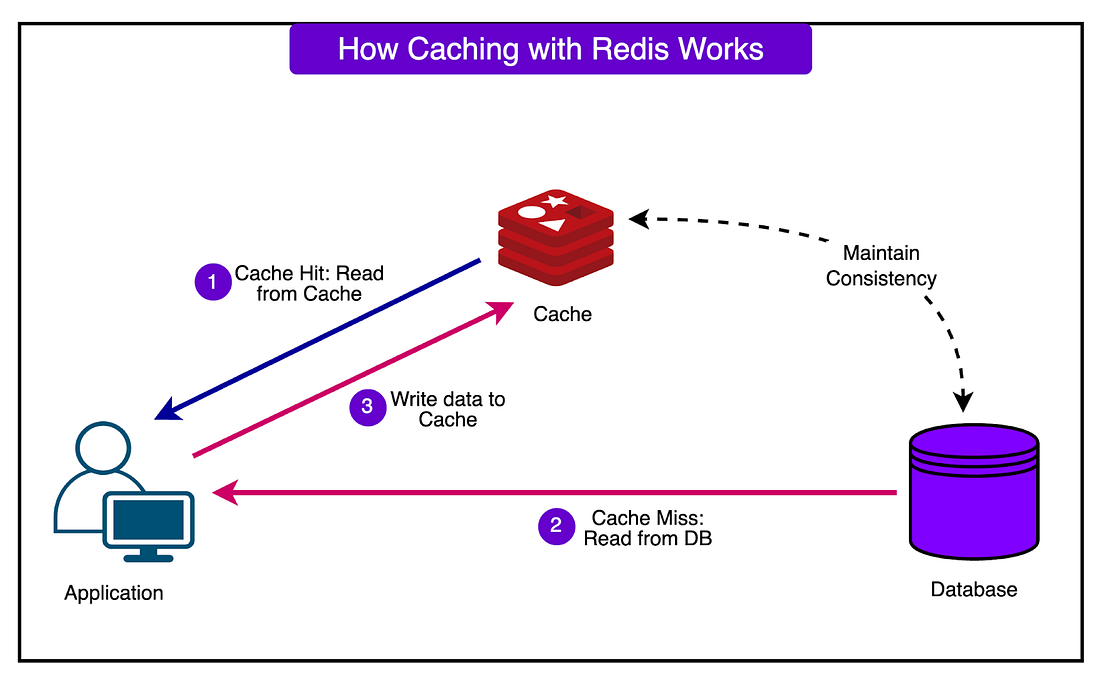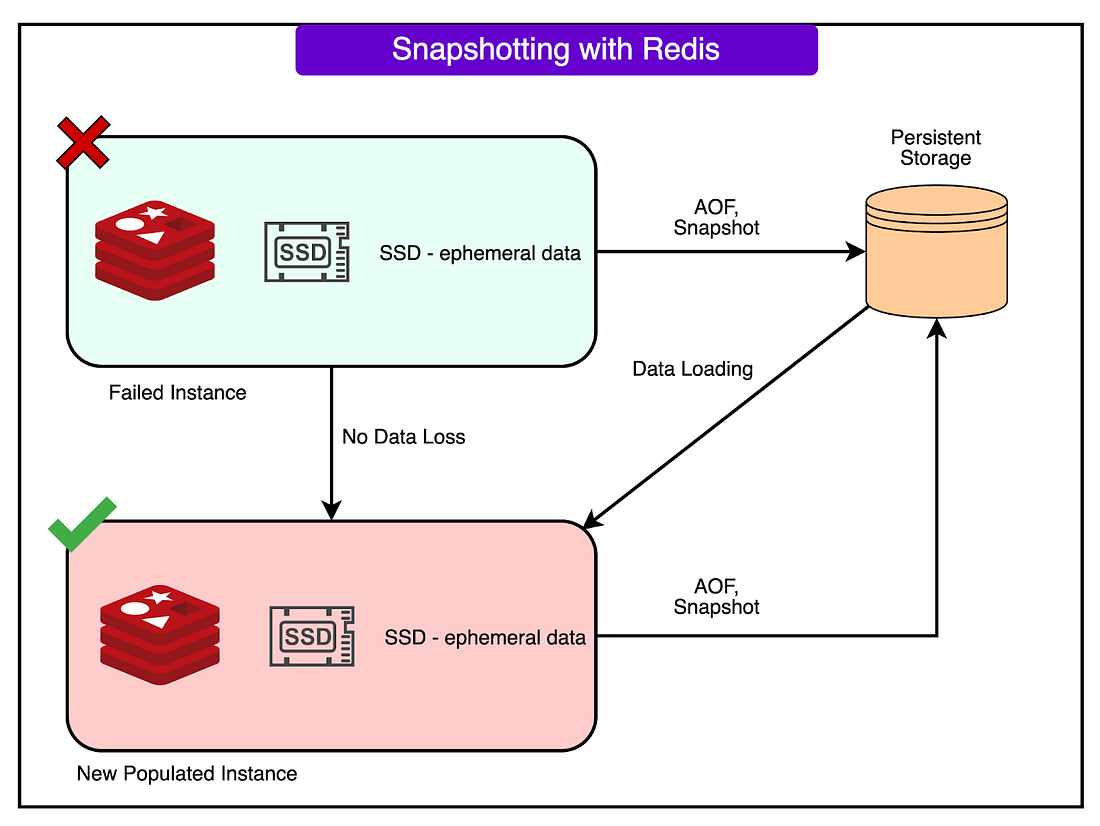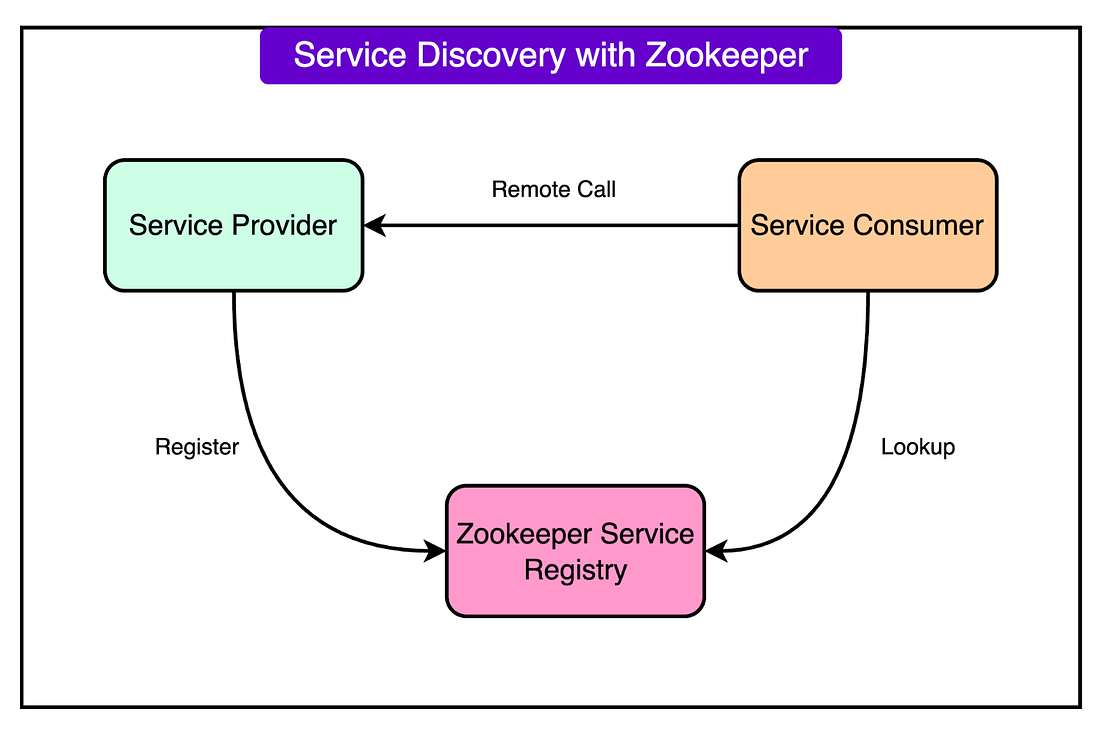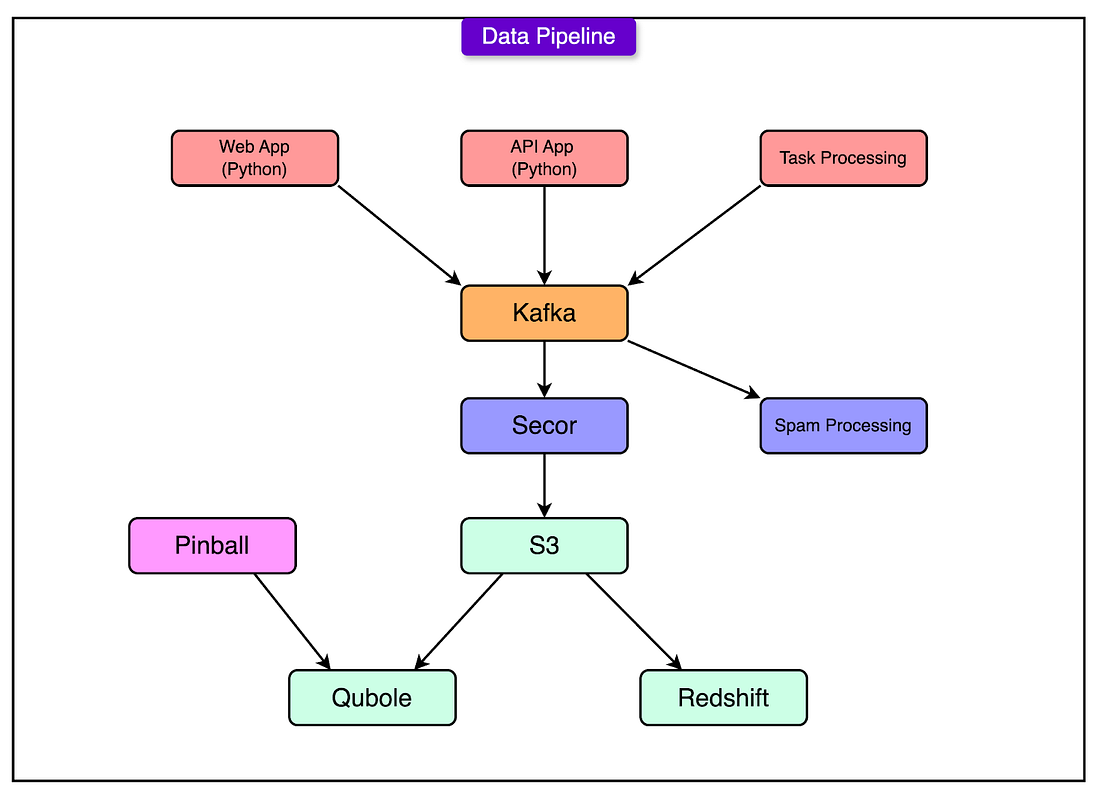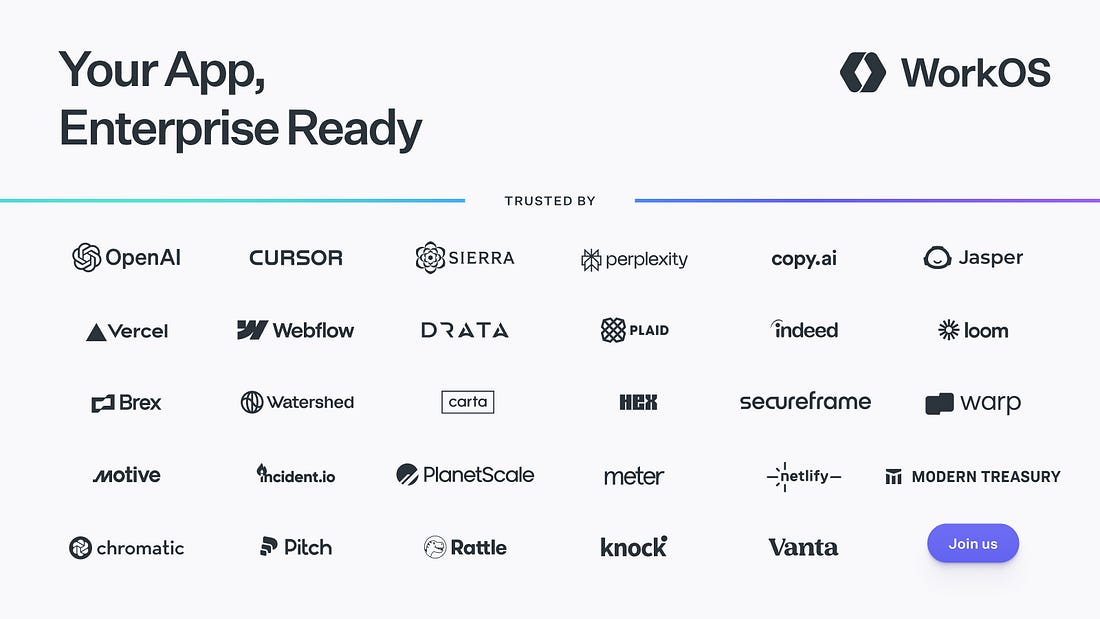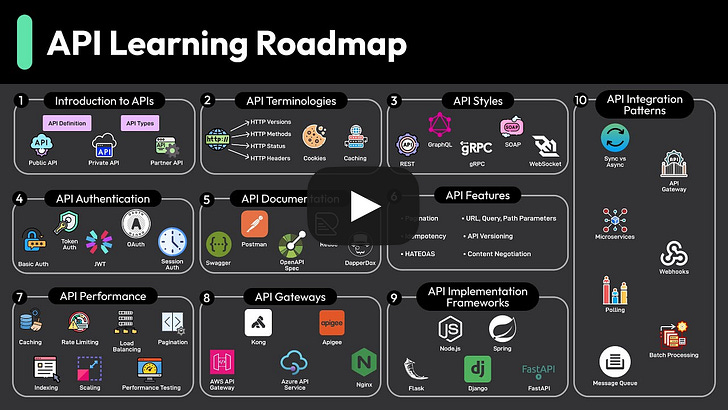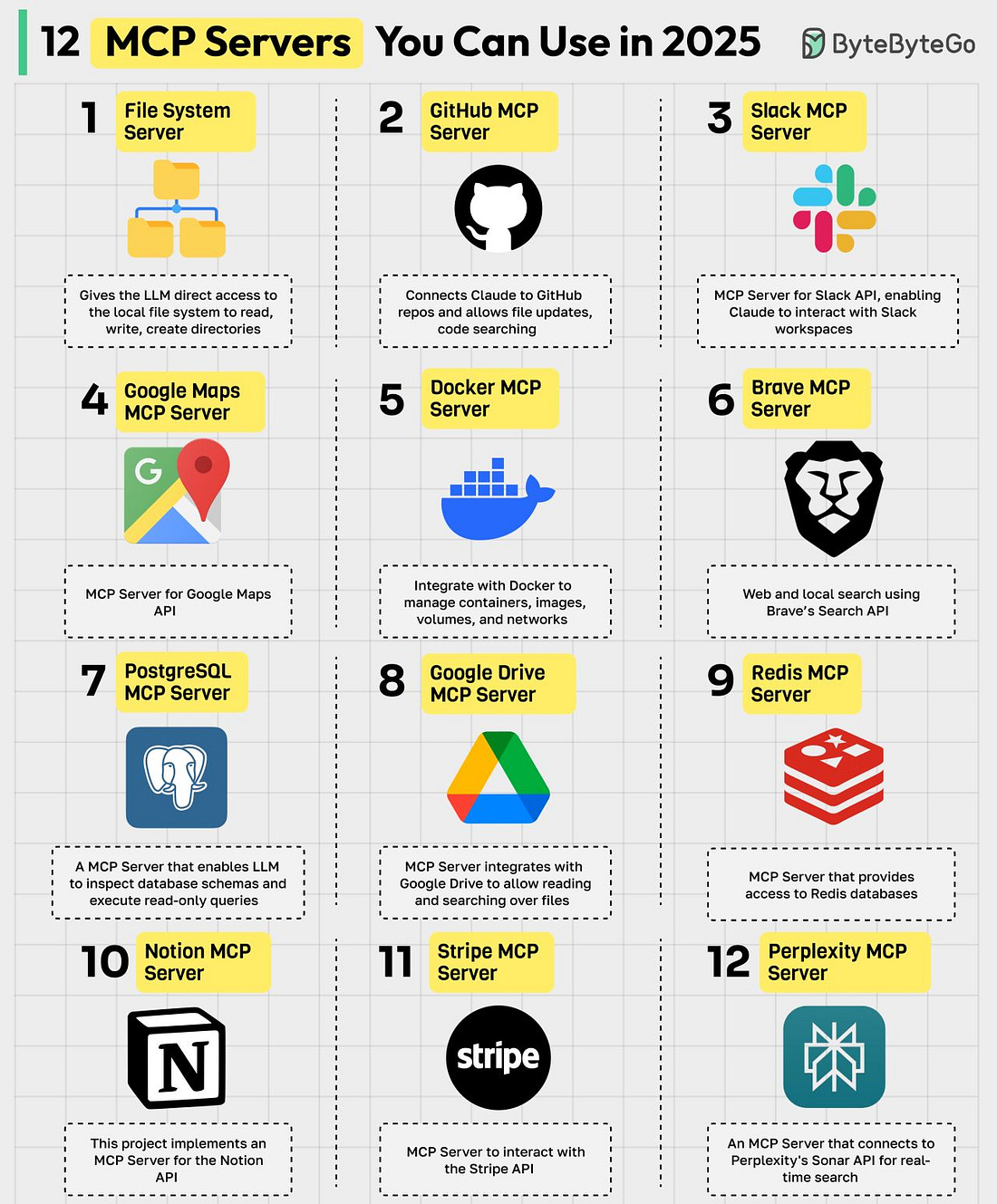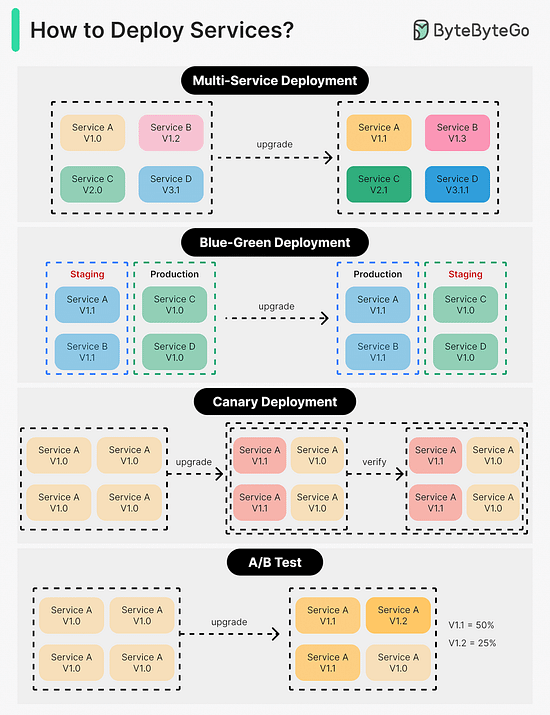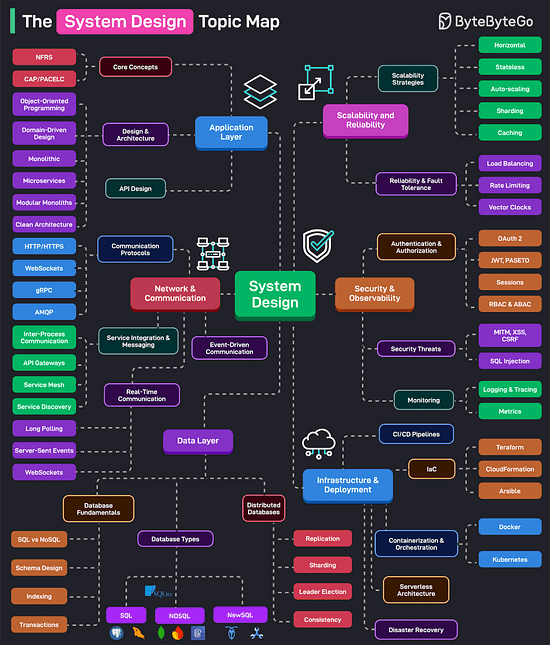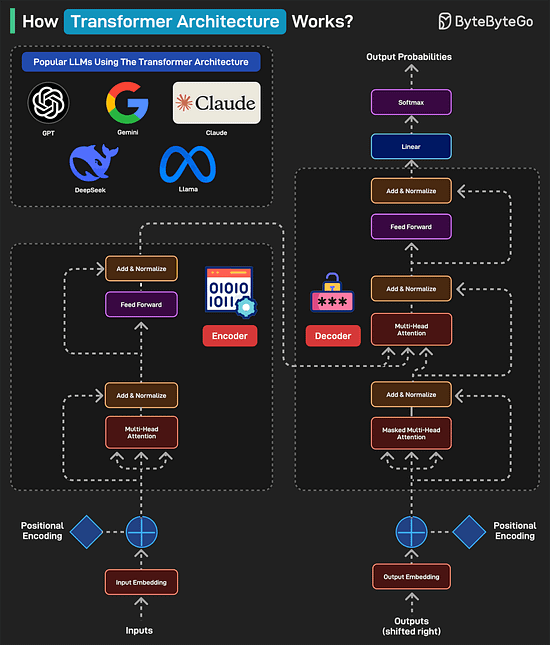Archives
- By thread 5365
-
By date
- June 2021 10
- July 2021 6
- August 2021 20
- September 2021 21
- October 2021 48
- November 2021 40
- December 2021 23
- January 2022 46
- February 2022 80
- March 2022 109
- April 2022 100
- May 2022 97
- June 2022 105
- July 2022 82
- August 2022 95
- September 2022 103
- October 2022 117
- November 2022 115
- December 2022 102
- January 2023 88
- February 2023 90
- March 2023 116
- April 2023 97
- May 2023 159
- June 2023 145
- July 2023 120
- August 2023 90
- September 2023 102
- October 2023 106
- November 2023 100
- December 2023 74
- January 2024 75
- February 2024 75
- March 2024 78
- April 2024 74
- May 2024 108
- June 2024 98
- July 2024 116
- August 2024 134
- September 2024 130
- October 2024 141
- November 2024 171
- December 2024 115
- January 2025 216
- February 2025 140
- March 2025 220
- April 2025 233
- May 2025 239
- June 2025 303
- July 2025 178
-
Let the electric surfboard take you to endless water fun!
Hello Friend.
Wishing you have a nice day!
This is Marie from Hoverstar Flight Technology Co.,Ltd. We are main in water sports and water rescue for more than 10 years.
Glad to know that you are interested in our electric surfboard products.
I'm here want to share with you more details about our electric surfboard, our H5-F was selling well in USA, Canada, Germany etc. We have run them in rivers, oceans and lakes and have customers around the globe.
It can rapid acceleration in 2 seconds and the max speed could be 58km/h.
Under the max speed running, it could last for 30-40min.
Under normal surfing speed, it could last for 60-90 min. Satisfy the user experience of different levels of customers.
Here are some details on the device: China Battery Powered/Motorised/Electric Surfboard Supplies For Sale | Havospark

Our classic design is the the black one with carbon fiber material as below the pic showed. No MOQ limited and competitive price.
Also, all the boards could accept custom design in 1pc, like colors, patterns, logo etc.
Please kindly let me know if you have any questions.We would greatly appreciate it if we could have further communication.
Thanks and Warm Regards
Marie Lee
Shenzhen Hoverstar Flight Technology Co.,Ltd
email: marie@hoverstar.com
Contact/Wechat/Whatsapp: +8613527761074
Website:www.hoverstar.com
by "marie01" <marie01@hoverstarjet.com> - 04:06 - 19 May 2025 -
How Pinterest Scaled Its Architecture to Support 500 Million Users
How Pinterest Scaled Its Architecture to Support 500 Million Users
In this article, we’ll look at how Pinterest scaled its architecture to handle the scale and the challenges they faced along the way.͏ ͏ ͏ ͏ ͏ ͏ ͏ ͏ ͏ ͏ ͏ ͏ ͏ ͏ ͏ ͏ ͏ ͏ ͏ ͏ ͏ ͏ ͏ ͏ ͏ ͏ ͏ ͏ ͏ ͏ ͏ ͏ ͏ ͏ ͏ ͏ ͏ ͏ ͏ ͏ ͏ ͏ ͏ ͏ ͏ ͏ ͏ ͏ ͏ ͏ ͏ ͏ ͏ ͏ ͏ ͏ ͏ ͏ ͏ ͏ ͏ ͏ ͏ ͏ ͏ ͏ ͏ ͏ ͏ ͏ ͏ ͏ ͏ ͏ ͏ ͏ ͏ ͏ ͏ ͏ ͏ ͏ ͏ ͏ ͏ ͏ ͏ ͏ ͏ ͏ ͏ ͏ ͏ ͏ ͏ ͏ ͏ ͏ ͏ ͏ ͏ ͏ ͏ ͏ ͏ ͏ ͏ ͏ ͏ ͏ ͏ ͏ ͏ ͏ ͏ ͏ ͏ ͏ ͏ ͏ ͏ ͏ ͏ ͏ ͏ ͏ ͏ ͏ ͏ ͏ ͏ ͏ ͏ ͏ ͏ ͏ ͏ ͏ ͏ ͏ ͏ ͏ ͏ ͏ ͏ ͏ ͏ ͏ ͏ ͏ ͏ ͏ ͏ ͏ ͏ ͏ ͏ ͏ ͏ ͏ ͏ ͏ ͏ ͏ ͏ ͏ ͏ ͏ ͏ ͏ ͏ ͏ ͏ ͏ ͏ ͏ ͏ ͏ ͏ ͏ ͏ ͏ ͏ ͏ ͏ ͏ ͏ ͏ ͏ ͏ ͏ ͏ ͏ ͏ ͏ ͏ ͏ ͏ ͏ ͏ Forwarded this email? Subscribe here for moreAvoid the widening AI engineering skills gap (Sponsored)
Most AI hype today is about developer productivity and augmentation. This overshadows a more important opportunity: AI as the foundation for products and features that weren’t previously possible.
But, it’s a big jump from building Web 2.0 applications to AI-native products, and most engineers aren’t prepared. That’s why Maven is hosting 50+ short, free live lessons with tactical guidance and demos from AI engineers actively working within the new paradigm.
This is your opportunity to upskill fast and free with Maven’s expert instructors. We suggest you start with these six:
Evaluating Agentic AI Applications - Aish Reganti (Tech Lead, AWS) & Kiriti Badam (Applied AI, OpenAI)
Optimize Structured Data Retrievals with Evals - Hamel Husain (AI Engineer, ex-Github, Airbnb)
CTO Playbook for Agentic RAG - Doug Turnbull (Principal ML Engineer, ex-Reddit, Shopify)
Build Your First Agentic AI App with MCP - Rafael Pierre (Principal AI Engineer, ex-Hugging Face, Databricks)
Embedding Performance through Generative Evals - Jason Liu (ML Engineer, ex-Stitch Fix, Meta)
Design Vertical AI Agents - Hamza Farooq (Stanford instructor, ex-Google researcher)
To go deeper with these experts, use code BYTEBYTEGO to get $100 off their featured AI courses - ends June 30th.
Disclaimer: The details in this post have been derived from the articles/videos shared online by the Pinterest engineering team. All credit for the technical details goes to the Pinterest Engineering Team. The links to the original articles and videos are present in the references section at the end of the post. We’ve attempted to analyze the details and provide our input about them. If you find any inaccuracies or omissions, please leave a comment, and we will do our best to fix them.
Pinterest launched in March 2010 with a typical early-stage setup: a few founders, one engineer, and limited infrastructure. The team worked out of a small apartment. Resources were constrained, and priorities were clear—ship features fast and figure out scalability later.
The app didn’t start as a scale problem but as a side project. A couple of founders, a basic web stack, and an engineer stitching together Python scripts in a shared apartment. No one was thinking about distributed databases when the product might not survive the week.
The early tech decisions reflected this mindset. The stack included:
Python for the application layer
NGINX as a front-end proxy
MySQL with a read replica
MongoDB for counters
A basic task queue for sending emails and social updates
But the scale increased rapidly. One moment it’s a few thousand users poking around images of food and wedding dresses. Then traffic doubles, and suddenly, every service is struggling to maintain performance, logs are unreadable, and engineers are somehow adding new infrastructure in production.
This isn’t a rare story. The path from minimum viable product to full-blown platform often involves growing pains that architectural diagrams never show. Systems that worked fine for 10,000 users collapse at 100,000.
In this article, we’ll look at how Pinterest scaled its architecture to handle the scale and the challenges they faced along the way.
The Initial Architecture
Pinterest’s early architecture reflected its stage: minimal headcount, fast iteration cycles, and a stack assembled more for momentum than long-term sustainability.
When the platform began to gain traction, the team moved quickly to AWS. The choice wasn’t the result of an extensive evaluation. AWS offered enough flexibility, credits were available, and the team could avoid the friction of setting up physical infrastructure.
The initial architecture looked like this:
The technical foundation included:
NGINX is the front-end HTTP server. It handled incoming requests and routed them to application servers. NGINX was chosen for its simplicity and performance, and it required little configuration to get working reliably.
Python-based web engines, four in total, processed application logic. Python offered a high development speed and decent ecosystem support. For a small team, being productive in the language mattered more than raw runtime performance.
MySQL, with a read slave, served as the primary data store. The read slave allowed some level of horizontal scaling by distributing read operations, which helped reduce load on the primary database. At this point, the schema and data model were still evolving rapidly.
MongoDB was added to handle counters. These were likely used for tracking metrics like likes, follows, or pins. MongoDB’s document model and ease of setup made it a quick solution. It wasn’t deeply integrated or tuned.
A simple task queue system was used to decouple time-consuming operations like sending emails and posting to third-party platforms (for example, Facebook, Twitter). The queue was critical for avoiding performance bottlenecks during user interactions.
This stack wasn’t optimized for scale or durability. It was assembled to keep the product running while the team figured out what the product needed to become.
Rapid Growth and Chaos
As Pinterest’s popularity grew, traffic doubled every six weeks. This kind of growth puts a great strain on the infrastructure.
Pinterest hit this scale with a team of just three engineers. In response, the team added technologies reactively. Each new bottleneck triggered the introduction of a new system:
MySQL remained the core data store, but began to strain under concurrent reads and writes.
MongoDB handled counters.
Cassandra was used to handle distributed data needs.
MBase was introduced—less for fit, more because it was promoted as a quick fix.
Redis entered the stack for caching and fast key-value access.
The result was architectural entropy. Multiple databases, each with different operational behaviors and failure modes, created complexity faster than the team could manage.
Each new database seemed like a solution at first until its own set of limitations emerged. This pattern repeated: an initial phase, followed by operational pain, followed by another tool. By the time the team realized the cost, they were maintaining a fragile web of technologies they barely had time to understand.
This isn’t rare. Growth exposes every shortcut. What works for a smaller-scale project can’t always handle production traffic. Adding tools might buy time, but without operational clarity and internal expertise, it also buys new failure modes.
By late 2011, the team recognized a hard truth: complexity wasn’t worth it. They didn’t need more tools. They needed fewer, more reliable ones.
Post-Rearchitecture Stack
After enduring repeated failures and operational overload, Pinterest stripped the stack down to its essentials.
The architecture stabilized around three core components: MySQL, Redis, and Memcached (MIMC). Everything else (MongoDB, Cassandra, MBase) was removed or isolated.
Let’s look at each in more detail.
MySQL
MySQL returned to the center of the system.
It stored all core user data: boards, pins, comments, and domains. It also became the system of record for legal and compliance data, where durability and auditability were non-negotiable. The team leaned on MySQL’s maturity: decades of tooling, robust failover strategies, and a large pool of operational expertise.
However, MySQL had one critical limitation: it didn’t scale horizontally out of the box. Pinterest addressed this by sharding and, more importantly, designing systems to tolerate that limitation. Scaling became a question of capacity planning and box provisioning, not adopting new technologies.
The diagram below shows how sharding works in general:
Redis
Redis handled problems that MySQL couldn’t solve cleanly:
Feeds: Pushing updates in real-time requires low latency and fast access patterns.
Follower graph: The complexity of user-board relationships demanded a more dynamic, memory-resident structure.
Public feeds: Redis provided a true list structure with O(1) inserts and fast range reads, ideal for rendering content timelines.
Redis was easier to operate than many of its NoSQL competitors. It was fast, simple to understand, and predictable, at least when kept within RAM limits.
Durability Modes: Choosing Trade-offs Explicitly
Redis offers several persistence modes, each with clear implications:
No persistence: Everything lives in RAM and disappears on reboot. It’s fast and simple, but risky for anything critical.
Snapshotting (RDB): Periodically saves a binary dump of the dataset. If a node fails, it can recover from the last snapshot. This mode balances performance with recoverability.
Append-only file (AOF): Logs every write operation. More durable, but with higher I/O overhead.
Pinterest leaned heavily on Redis snapshotting. It wasn’t bulletproof, but for systems like the follower graph or content feeds, the trade-off worked: if a node died, data from the last few hours could be rebuilt from upstream sources. This avoided the latency penalties of full durability without sacrificing recoverability.
The diagram below shows snapshotting with Redis.
Why Redis Over MySQL?
MySQL remained Pinterest’s source of truth, but for real-time applications, it fell short:
Write latency increased with volume, especially under high concurrency.
Tree-based structures (for example, B-trees) make inserts and updates slower and harder to optimize for queue-like workloads.
Query flexibility came at the cost of performance predictability.
Redis offered a better fit for these cases:
Feeds: Users expect content updates instantly. Redis handled high-throughput, low-latency inserts with predictable performance.
Follower graph: Pinterest’s model allowed users to follow boards, users, or combinations. Redis stores this complex relationship graph as in-memory structures with near-zero access time.
Caching: Redis served as a fast-access layer for frequently requested data like profile overviews, trending pins, or related content.
Memcached (MIMC): Cache Layer Stability
MIMC served as a pure cache layer. It didn’t try to be more than that, and that worked in its favor.
It offloaded repetitive queries, reduced latency, and helped absorb traffic spikes. Its role was simple but essential: act as a buffer between user traffic and persistent storage.
Microservices and Infrastructure Abstraction
As Pinterest matured, scaling wasn’t just about systems. It was also about the separation of concerns.
The team began pulling tightly coupled components into services, isolating core functionality into defined boundaries with clear APIs.
Service Boundaries That Mattered
Certain parts of the architecture naturally became services because they carried high operational risk or required specialized logic:
Search Service: Handled query parsing, indexing, and result ranking. Internally, it became a complex engine, dealing with user signals, topic clustering, and content retrieval. From the outside, it exposed a simple interface: send a query, get relevant results. This abstraction insulated the rest of the system from the complexity behind it.
Feed Service: Managed the distribution of content updates. When a user pinned something, the feed service handled propagation to followers. It also enforced delivery guarantees and ordering semantics, which were tricky to get right at scale.
MySQL Service: Became one of the first hardened services. It sat between applications and the underlying database shards. This layer implemented safety checks, access controls, and sharding logic. By locking down direct access, it avoided mistakes that previously caused corrupted writes, like saving data to the wrong shard.
PinLater: Asynchronous Task Processing
Background jobs were offloaded to a system called PinLater. The model was simple: tasks were written to a MySQL-backed queue with a name, payload, and priority. Worker pools pulled from this queue and executed jobs.
This design had key advantages:
Tasks were durable.
Failure recovery was straightforward.
Prioritization was tunable without major system redesign.
PinLater replaced ad hoc queues and inconsistent task execution patterns. It introduced reliability and consistency into Pinterest’s background job landscape.
Service Discovery with Zookeeper
To avoid hardcoded service dependencies and brittle connection logic, the team used Zookeeper as a service registry. When an application needed to talk to a service, it queried Zookeeper to find available instances.
This offered a few critical benefits:
Resilience: Services could go down and come back up without breaking clients.
Elasticity: New instances could join the cluster automatically.
Connection management: Load balancing became less about middleware and more about real-time awareness.
Data Pipeline and Monitoring
As Pinterest scaled, visibility became non-negotiable. The team needed to know what was happening across the system in real-time. Logging and metrics weren’t optional but part of the core infrastructure.
Kafka at the Core
The logging backbone started with Kafka, a high-throughput, distributed message broker. Every action on the site (pins, likes, follows, errors) pushed data into Kafka. Think of it as a firehose: everything flows through, nothing is lost unless explicitly discarded.
Kafka solved a few key problems:
It decoupled producers from consumers. Application servers didn’t need to know who would process the data or how.
It buffered spikes in traffic without dropping events.
It created a single source of truth for event data.
Secor + S3: Durable, Queryable Logs
Once the data hit Kafka, it flowed into Secor, an internal tool that parsed and transformed logs. Seor broke log entries into structured formats, tagged them with metadata, and wrote them into AWS S3.
This architecture had a critical property: durability. S3 served as a long-term archive. Once the data landed there, it was safe. Even if downstream systems failed, logs could be replayed or reprocessed later.
The team used this pipeline not just for debugging, but for analytics, feature tracking, and fraud detection. The system was designed to be extensible. Any new use case could hook into Kafka or read from S3 without affecting the rest of the stack.
Real-Time Monitoring
Kafka wasn’t only about log storage. It enabled near-real-time monitoring. Stream processors consumed Kafka topics and powered dashboards, alerts, and anomaly detection tools. The moment something strange happened, such as as spike in login failures, a drop in feed loads, it showed up immediately.
This feedback loop was essential. Pinterest didn’t just want to understand what happened after a failure. They wanted to catch it as it began.
Conclusion
Pinterest’s path from early chaos to operational stability left behind a clear set of hard-earned lessons, most of which apply to any system scaling beyond its initial design.
First, log everything from day one. Early versions of Pinterest logged to MySQL, which quickly became a bottleneck. Moving to a pipeline of Kafka to Seor to S3 changed the game. Logs became durable, queryable, and reusable. Recovery, debugging, analytics, everything improved.
Second, know how to process data at scale. Basic MapReduce skills went a long way. Once logs landed in S3, teams used MapReduce jobs to analyze trends, identify regressions, and support product decisions. SQL-like abstractions made the work accessible even for teams without deep data engineering expertise.
Third, instrument everything that matters. Pinterest adopted StatsD to track performance metrics without adding friction. Counters, timers, and gauges flowed through UDP packets, avoiding coupling between the application and the metrics backend. Lightweight, asynchronous instrumentation helped spot anomalies early, before users noticed.
Fourth, don’t start with complexity. Overcomplicating architecture early on, especially by adopting too many tools too fast, guarantees long-term operational pain.
Finally, pick mature, well-supported technologies. MySQL and Memcached weren’t flashy, but they worked. They were stable, documented, and surrounded by deep communities. When something broke, answers were easy to find.
Pinterest didn’t scale because it adopted cutting-edge technology. It scaled because it survived complexity and invested in durability, simplicity, and visibility. For engineering leaders and architects, the takeaways are pragmatic:
Design systems to fail visibly, not silently.
Favor tools with proven track records over tools with bold promises.
Assume growth will outpace expectations, and build margins accordingly.
References:
SPONSOR US
Get your product in front of more than 1,000,000 tech professionals.
Our newsletter puts your products and services directly in front of an audience that matters - hundreds of thousands of engineering leaders and senior engineers - who have influence over significant tech decisions and big purchases.
Space Fills Up Fast - Reserve Today
Ad spots typically sell out about 4 weeks in advance. To ensure your ad reaches this influential audience, reserve your space now by emailing sponsorship@bytebytego.com.
Like
Comment
Restack
© 2025 ByteByteGo
548 Market Street PMB 72296, San Francisco, CA 94104
Unsubscribe
by "ByteByteGo" <bytebytego@substack.com> - 11:37 - 19 May 2025 -
A leader’s guide to a prosperous economy
Leading Off
Identify the indicators
by "McKinsey Leading Off" <publishing@email.mckinsey.com> - 04:29 - 19 May 2025 -
⏰ Our LIVE show begins in 3-2-1…
…tomorrow! Registration is FREE. Watch live or later – you decide!

Our live show starts tomorrow!
Whether you watch live or watch later, register NOW to get exclusive
access to live sessions, on-demand recordings, and more!
Get the “best of” SAP Sapphire!

SAP (Legal Disclosure | SAP)
This e-mail may contain trade secrets or privileged, undisclosed, or otherwise confidential information. If you have received this e-mail in error, you are hereby notified that any review, copying, or distribution of it is strictly prohibited. Please inform us immediately and destroy the original transmittal. Thank you for your cooperation.You are receiving this e-mail for one or more of the following reasons: you are an SAP customer, you were an SAP customer, SAP was asked to contact you by one of your colleagues, you expressed interest in one or more of our products or services, or you participated in or expressed interest to participate in a webinar, seminar, or event. SAP Privacy Statement
This e-mail was sent to you on behalf of the SAP Group with which you have a business relationship. If you would like to have more information about your Data Controller(s) please click here to contact webmaster@sap.com.
This promotional e-mail was sent to you by SAP Global Marketing and provides information on SAP's products and services that may be of interest to you. If you would prefer not to receive such e-mails from SAP in the future, please click on the Unsubscribe link.
To ensure you continue to receive SAP related information properly please add sap@mailsap.com to your address book or safe senders list.

by "SAP Sapphire" <sap@mailsap.com> - 03:47 - 19 May 2025 -
How are corporate boards handling geopolitical risk?
On McKinsey Perspectives
It’s complicated Brought to you by Alex Panas, global leader of industries, & Axel Karlsson, global leader of functional practices and growth platforms
Welcome to the latest edition of Only McKinsey Perspectives. We hope you find our insights useful. Let us know what you think at Alex_Panas@McKinsey.com and Axel_Karlsson@McKinsey.com.
—Alex and Axel
•
Rising complexity. Corporate boards face increased complexity, with heightened geopolitical risk among the main concerns they must consider. Yet even though boards acknowledge their expanding role in guiding organizations, less than half of surveyed board directors say geopolitical and macroeconomic risks are currently on their agendas, McKinsey Senior Partner Frithjof Lund reveals in a recent episode of the Inside the Strategy Room podcast. Developing a tool kit to manage geopolitical risk is a new muscle for many boards to build, McKinsey Partner Ziad Haider adds.
—Edited by Belinda Yu, editor, Atlanta
This email contains information about McKinsey's research, insights, services, or events. By opening our emails or clicking on links, you agree to our use of cookies and web tracking technology. For more information on how we use and protect your information, please review our privacy policy.
You received this email because you subscribed to the Only McKinsey Perspectives newsletter, formerly known as Only McKinsey.
Copyright © 2025 | McKinsey & Company, 3 World Trade Center, 175 Greenwich Street, New York, NY 10007
by "Only McKinsey Perspectives" <publishing@email.mckinsey.com> - 01:24 - 19 May 2025 -
Share Your Story on Influencers Gone Wild Blog (IGWB)!
Hello,Have you ever found yourself behind the filter, beyond the likes, or caught up in a moment too real for the feed? Maybe you’ve experienced the wild side of influencer culture, or maybe you are the wild story that needs to be told. Whatever your truth is—we want to hear it.
Influencers Gone Wild Blog (influencersgonewildblog.com) is more than just a blog. It’s a platform where real stories meet raw honesty. No fluff, no fake followers—just the behind-the-scenes moments, confessions, rants, revelations, and everything in between.
We’re calling on creators, followers, industry insiders, and even the curious observers to step up and share your experience.
Whether it’s:-
A shocking collab gone wrong
-
A brand deal you wish you’d never signed
-
A viral moment that changed your life—for better or worse
-
A secret struggle behind your perfect feed
-
Or simply your unfiltered opinion on influencer culture
This is your chance to be part of a growing community that values honesty, transparency, and a little bit of chaos.
📝 How to Submit:
Visit https://influencersgonewildblog.com and hit “Submit Your Story.” You can remain anonymous or proudly claim your words—it’s completely up to you.
📣 Let Your Story Be the One That Starts the Conversation.
We believe in real stories from real people. And if you’re ready to speak your truth, we’re ready to publish it.
Join the wild side of the internet. Your voice matters.
by "Shahid Maqsood" <smaqsood1988@gmail.com> - 12:25 - 19 May 2025 -
-
You're Invited: Datadog Live Amsterdam 5th June, 2025!
Join us at Datadog Live AmsterdamHi there,
Why attend?
Ready to dive into the future of observability and connect with Amsterdam’s vibrant tech community?
Join us at Datadog Live Amsterdam — an exclusive in-person event where you’ll hear from our customers and industry leaders how they’re tackling modern challenges like security, infrastructure complexity, and scaling observability.
📅 When: June 5 | 4:00 PM – 8:00 PM
📍 Where: De Nieuwe Liefde, Da Costakade 102, 1053 WP Amsterdam
- Hear from Ryan Earley, Enterprise Sales Engineer, as he shares how Datadog helps DevSecOps teams gain full visibility from code to cloud and ship faster, safer software.
- Learn how to unify vulnerability management, Cloud SIEM, runtime threat detection, and compliance monitoring—so your teams can stay secure and agile at scale.
- Enjoy drinks, food, and great conversations with fellow tech professionals and innovators in your city.
Secure your spot now – space is limited!Cheers,
Tanja RagnarssonSenior Manager, Field Marketing P.S. Get more of Datadog at DASHJoin us on June 10-11 in NYC for Datadog’s annual conference—the observability event of the year! Learn more.Visit our email preference center to unsubscribe or update subscription options© 2025 Datadog Inc, 620 8th Ave, 45th Floor, New York, NY 10018
P.S. Get more of Datadog at DASHJoin us on June 10-11 in NYC for Datadog’s annual conference—the observability event of the year! Learn more.Visit our email preference center to unsubscribe or update subscription options© 2025 Datadog Inc, 620 8th Ave, 45th Floor, New York, NY 10018This email was sent to info@learn.odoo.com.
by "Tanja Ragnarsson" <events@datadoghq.com> - 10:00 - 18 May 2025 -
STARTS TUESDAY!] Did you see my offer?
You should definitely be in the room!OK… it’s almost here! I’m so pumped… I can’t even tell you how excited I am!
This is going to be the craziest and most intense (in a good way) 3 days EVER!
You ready for this!! Did you go read the agenda?? (We start Tuesday, May 20th!)
LEARN MORE AND GRAB YOUR TICKET TO ‘SELLING ONLINE’ HERE BEFORE IT’S TOO LATE! >>
Look… If you’ve been spinning your wheels… working hard but not really getting anywhere… I want you to know, I get it.
I’ve been there too...
You try one thing…
Then another…
Then something else…
And none of it really sticks! It’s frustrating. It’s exhausting. And it starts to feel like maybe you’re just not cut out for this.
But the truth is, most people stay stuck because they don’t have a real roadmap.
Not another checklist…
Not another YouTube video that leaves you more confused than when you started…
What you need is a system that shows you what to say, how to say it, and where to say it so people actually want to buy.
That’s what Selling Online is!!LEARN MORE AND GRAB YOUR TICKET TO ‘SELLING ONLINE’ HERE BEFORE IT’S TOO LATE! >>
It’s 3 full days where I’ll walk you through the exact process that helped me stop guessing… and finally start growing.
So, imagine this...
❌ No more second-guessing your offer.
❌ No more wondering how to present it.
❌ No more trying to figure out if you’re doing it “right.”
Instead… you’ve got clarity. You’ve got a presentation that actually converts. You’ve got momentum!!
You’ll have everything you need to finally launch your business the right way…
Or scale what you’ve already built to a whole new level!!
How cool would that be?
NOW FOR THE INSANE PART!!
And right now, to make sure you don’t miss it… I’m giving you a 97% discount on your ticket!
Yep. I’m dead serious!
But we will stop selling tickets soon… BECAUSE IT’S ALMOST STARTING! (Tuesday Morning! May 20th!)
LEARN MORE AND GRAB YOUR TICKET TO ‘SELLING ONLINE’ HERE BEFORE IT’S TOO LATE! >>
You don’t have to keep spinning your wheels.
You just have to get in the room!See you on Tuesday!
Russell Brunson
P.S. - Don’t forget, you’re just ONE funnel away…
© Prime Mover LLC
By reading this, you agree to all of the following: You understand this to be an expression of opinions and not professional advice. You are solely responsible for the use of any content and hold Prime Mover LLC and all members and affiliates harmless in any event or claim.
If you purchase anything through a link in this email, you should assume that we have an affiliate relationship with the company providing the product or service that you purchase, and that we will be paid in some way. We recommend that you do your own independent research before purchasing anything.
Copyright © 2025 Prime Mover LLC. All Rights Reserved.
To make sure you keep getting these emails, please add us to your address book or whitelist us. If you don't want to receive any other emails, click on the unsubscribe link below.
Prime Mover LLC
3443 W Bavaria St
Eagle, ID 83616
United States
by "Russell Brunson" <newsletter@marketingsecrets.com> - 09:13 - 18 May 2025 -
Premium Elevator Parts for Unique Needs – QTYX Group’s Flexible Solutions
DearInfo,
Whether you manage hotels, real estate, or niche projects, QTYX Group provides high-quality elevator components tailored to your specific requirements.
Why Work with Us?
✨ Fast Custom Quotes: Submit your specs and receive a proposal within 24 hours.
✨ Small-Order Friendly: No MOQ constraints – order exactly what you need.
✨ Technical Guidance: Simplified installation guides for non-technical teams.
We’re here to simplify your procurement!
Regards,
Amber Zhang
Customer Solutions Advisor | QTYX Group+86 180 4953 8192 | official@yongxiangroup.com
http://cn.qtyxgroup.com/
by "official22" <official22@yongxian-group.com> - 03:09 - 18 May 2025 -
Re: Cost?
Hi,
I was going through your website, which isn't doing well because of some errors but has a lot of potential in your business.
We can place your website on Google's first page for your city or state.
May I send an SEO plan & error report?
Thank You
by "Lusia Zeb" <lusia80065@hotmail.com> - 11:24 - 18 May 2025 -
Discover the Future of Compact, Dimmable Lighting – Introducing the FR-Gu4-3W-026DIM
Dear Info,
At FREE LIGHTING, we understand that finding a reliable, dimmable MR11 LED can be challenging. That’s why we developed the FR-Gu4-3W-026DIM – a compact yet powerful lighting solution, designed to meet the specific needs of professionals like you.

Why Choose Our Dimmable MR11?
· Precision Engineering: At just D35*H41mm, this compact MR11 is a feat of advanced circuit design, delivering 3.3W of stable, flicker-free light without the common dimming issues.
· High-Performance Output: 320lm, 3000K with a CRI of 80 – perfect for showcasing true colors and creating the ideal ambiance. We also offer a range of color temperatures (2200K, 3000K, 4000K, etc.) and higher CRI options (CRI90, CRI95) upon request, ensuring the perfect match for your project.
· Versatile Beam Control: Choose from 24°, 36°, or 60° lens angles to match any project requirement.
· Durability and Efficiency: Built to last with a single COB LED, ensuring low light decay and continuous, reliable performance.
Backed by our 12 years of expertise in LED miniature bulb manufacturing and over 94 patents, we’re committed to providing the highest quality LED solutions on the market.
Interested in samples or a custom quote? Just reply to this email, and I’ll get back to you shortly.
Looking forward to hearing your thoughts.
Best regards,
Vicky Hong
FREE LIGHTING
+86-13924663803
vicky@freelightingled.com
B4, Tieta Industrial Park, Hedi Rd, Gongming Town, Guangming Dist.,518106 Shenzhen, China
by "Issel Meir" <hardmisses305@gmail.com> - 03:27 - 18 May 2025 -
Limited Slots Available for Partnership at Poulton Park Golf Club
With only 18 exclusive slots available... Hi Sir/Madam,
The response to our business partnership opportunity at Poulton Park Golf Club has been fantastic!
With only 18 exclusive slots available, businesses are quickly recognising the value of:- Digital branding on the club’s mobile app, large screens, and online platforms.
- Networking with affluent members and corporate leaders.
- Complimentary golf at Poulton Park Golf Club and over 600 premier courses nationwide, including The Belfry and Celtic Manor.
- This is your chance to elevate Your Telecoms Consultant with an exclusive audience for just £245/month.
Call or email me today to secure your place before it’s too late.
Best regards,
James Thomson
Account Manager
+44 (0)7453 145 120

by "James Thomson - Golf Marketing Agency" <info@golfmarketingagency.co.uk> - 02:51 - 18 May 2025 -
Unbeatable Digital Display Solutions
Dear Info,
I hope this email finds you well. My name is Chris, and I am reaching out on behalf of Shenzhen Color Commercial Display Technology Co.,Ltd. I wanted to take this opportunity to introduce you to our company and provide some insights into how we can assist you.
We are a manufacturer specializing in comprehensive digital signage & digital out-of-home advertising solutions, providing quality products including indoor & outdoor digital signage, interactive touchscreen, LCD Video Wall & LED Video Wall, and etc.
We can also accept customization and provide OEM or SKD or CKD services to our customers.I look forward to your response and the possibility of discussing how we can collaborate for mutual success.

Thank you for considering this opportunity.
Sincerely,
Chris
whatsapp:+12792470420
Shenzhen Color Commercial Display Technology Co.,Ltd.
by "Xiaobai Bodin" <maschleralessandra656@gmail.com> - 10:19 - 17 May 2025 -
Upvc profiles manufacturer
Hello Info,
Good day!
This is from LION upvc profiles in China.
We mainly produce upvc profiles and finished windows and doors.
We do stable quality with good price.
We have 24hours service and you can contact with me any time.
Thanks and best regards
Ellen
by "sale15" <sale15@lion-upvc.com> - 08:49 - 17 May 2025 -
Raw material prices rising, Don't worry
Dear Info,
Hello!
Thank you for showing interest in our products! In light of the recent fluctuations in raw material prices, we fully understand your concerns about cost control. We are pleased to inform you that you do not need to worry about price increases for PVC, PE, copper wire, and other materials.
We have recently made bulk purchases of raw materials to ensure a stable supply. As a result, during our collaboration, the prices will remain stable, and we guarantee that the price of the products you purchase will not be affected by the rise in raw material costs in the market.
Should you have any questions or wish to learn more about our products, please feel free to reach out. We look forward to working with you and seizing new business opportunities together!
Best regards,
Jenny
Changzhou Vnew Electronics Co., Ltd.
by "info" <info@vnewcz.com> - 08:22 - 17 May 2025 -
Quick Rate Info
Hi,
Hope you're doing well. This's J from Hong-ocean. It's been a while since we last connected, and I wanted to reach out to see how things are going. Just wanted to touch base and remind you that we're here to support you with your shipping needs. If you have any questions or specific requirements, feel free to let me know.
We have preferential policies with shipping companies- by way of deducting tariff quotes
Also, I wanted to share some recent price updates(40'):
XIAMEN TO LA : O/F 2500/40HQ
SHANGHAI TO NYC : O/F 3500/40HQ
NINGBO TO SAVANNAH: O/F 3500/40HQ
These rates are valid until May 31th
And of course it's not just China, any country we can. If you receive this message, please reply with the number 1 or whatever you prefer!
Looking forward to hearing from you.
Best regards,
J
by "Jeffery" <yunus@mtlhcargos.com> - 04:42 - 17 May 2025 -
LECUSO - Your Reliable Partner of Street Light and Solar Related Products
Dear Info,
This is Lily Lee from Lecuso New Energy Co., Ltd . We're a company that specializes in solar light, light pole, outdoor lightingI'm wondering if you might be open to an initial conversation to gauge a fit?
We've worked with companies like United Nations Projects,Doosan Group South Korea,etc.
If you have a minute or two to learn more about us, you can visit our
website. If I don't hear from you, I will reach out to you
via phone later in the week.

___________________________
Thanks & Best Regards,
Export Sales
Lecuso New Energy Co.,Ltd.
Address: Songqiao Industry Park, Yangzhou City, Jiangsu province,China
LED lights,soalr lights solar system Web: www.lecusostreetlight.com
by "Sahib Kisoka" <sahibkisoka@gmail.com> - 04:05 - 17 May 2025 -
The week in charts
The Week in Charts
Climate technology, macroeconomic scenarios, and more Share these insights
Did you enjoy this newsletter? Forward it to colleagues and friends so they can subscribe too. Was this issue forwarded to you? Sign up for it and sample our 40+ other free email subscriptions here.
This email contains information about McKinsey's research, insights, services, or events. By opening our emails or clicking on links, you agree to our use of cookies and web tracking technology. For more information on how we use and protect your information, please review our privacy policy.
You received this email because you subscribed to The Week in Charts newsletter.
Copyright © 2025 | McKinsey & Company, 3 World Trade Center, 175 Greenwich Street, New York, NY 10007
by "McKinsey Week in Charts" <publishing@email.mckinsey.com> - 03:32 - 17 May 2025 -
More than Freight Fowarder
Dear Info,
How are you my friend, This is Napoleon Sales Manager from SMARTRANS INTERNATIONAL LTD. We are the one of the biggest logistics company in China,It is great honor to have this opportunity to introduce our company to you.
Firstly .We can give you more competive rate , if you have any goods in China , you can inquiry me .We have a good relationship with the shipping company,like MSK,CMA,SAF,COSCO,KLINE,OOCL,KMTC,PIL,APL,HMM,RCL ,NYK,WHL,ZIM,YANGMING and so on ... i am looking forward we can make good cooperation.
Secondly,We have Branch office:Hongkong Shenzhen Shanghai Guangzhou Xiamen Tianjin Dalian Qingdao Ningbo Fuzhou Dongguan Zhongshan Foshan Shunde Zhuhai Jiangmen Yangjiang.
Our Services include:
- Ocean freight (FCL, LCL)
- Air freight (Express Delivery and it takes 5-7 days to deliver)
- Import & export
- Hazardous cargo shipments
- Customs clearance
- Documentation (B/L, CO, ATA Carnets, etc)
- Warehousing and Distribution
- Door to door, airport to airport services
- Domestic Trucking Service
We enjoy high prestige and offer best serive and price,quality and prices.
For further information you can ctc me directly what'sapp:0086-13316816169 or add my skype :napoleon.china
I am looking forward your early reply ,thanks .
by "sales03" <sales03@smartrans.co> - 02:46 - 17 May 2025 -
EP163: 12 MCP Servers You Can Use in 2025
EP163: 12 MCP Servers You Can Use in 2025
MCP (Model Context Protocol) is an open standard that simplifies how AI models, particularly LLMs, interact with external data sources, tools, and services.͏ ͏ ͏ ͏ ͏ ͏ ͏ ͏ ͏ ͏ ͏ ͏ ͏ ͏ ͏ ͏ ͏ ͏ ͏ ͏ ͏ ͏ ͏ ͏ ͏ ͏ ͏ ͏ ͏ ͏ ͏ ͏ ͏ ͏ ͏ ͏ ͏ ͏ ͏ ͏ ͏ ͏ ͏ ͏ ͏ ͏ ͏ ͏ ͏ ͏ ͏ ͏ ͏ ͏ ͏ ͏ ͏ ͏ ͏ ͏ ͏ ͏ ͏ ͏ ͏ ͏ ͏ ͏ ͏ ͏ ͏ ͏ ͏ ͏ ͏ ͏ ͏ ͏ ͏ ͏ ͏ ͏ ͏ ͏ ͏ ͏ ͏ ͏ ͏ ͏ ͏ ͏ ͏ ͏ ͏ ͏ ͏ ͏ ͏ ͏ ͏ ͏ ͏ ͏ ͏ ͏ ͏ ͏ ͏ ͏ ͏ ͏ ͏ ͏ ͏ ͏ ͏ ͏ ͏ ͏ ͏ ͏ ͏ ͏ ͏ ͏ ͏ ͏ ͏ ͏ ͏ ͏ ͏ ͏ ͏ ͏ ͏ ͏ ͏ ͏ ͏ ͏ ͏ ͏ ͏ ͏ ͏ ͏ ͏ ͏ ͏ ͏ ͏ ͏ ͏ ͏ ͏ ͏ ͏ ͏ ͏ ͏ ͏ ͏ ͏ ͏ ͏ ͏ ͏ ͏ ͏ ͏ ͏ ͏ ͏ ͏ ͏ ͏ ͏ ͏ ͏ ͏ ͏ ͏ ͏ ͏ ͏ ͏ ͏ ͏ ͏ ͏ ͏ ͏ ͏ ͏ ͏ ͏ ͏ ͏ Forwarded this email? Subscribe here for moreThe Battle Against Bots: How to Protect Your AI App (Sponsored)
Modern bots are smarter than ever. They execute JavaScript, store cookies, rotate IPs, and even solve CAPTCHAs with AI. As attacks grow more sophisticated, traditional detection methods can’t reliably keep them out.
Enter WorkOS Radar, your all-in-one bot defense solution. With a single API, you can instantly secure your signup flow against brute force attacks, leaked credentials, disposable emails, and fake signups. Radar uses advanced device fingerprinting to stop bots in their tracks and keep real users flowing through.
Fast to implement and built to scale.
This week’s system design refresher:
APIs Explained in 6 Minutes! (Youtube video)
12 MCP Servers You Can Use in 2025
How to Deploy Services
The System Design Topic Map
How Transformers Architecture Works?
We’re Hiring at ByteByteGo
SPONSOR US
APIs Explained in 6 Minutes!
12 MCP Servers You Can Use in 2025
MCP (Model Context Protocol) is an open standard that simplifies how AI models, particularly LLMs, interact with external data sources, tools, and services. An MCP server acts as a bridge between these AI models and external tools. Here are the top MCP servers:
File System MCP Server
Allows the LLM to directly access the local file system to read, write, and create directories.GitHub MCP Server
Connects Claude to GitHub repos and allows file updates, code searching.Slack MCP Server
MCP Server for Slack API, enabling Claude to interact with Slack workspaces.Google Maps MCP Server
MCP Server for Google Maps API.Docker MCP Server
Integrate with Docker to manage containers, images, volumes, and networks.Brave MCP Server
Web and local search using Brave’s Search API.PostgreSQL MCP Server
An MCP server that enables LLM to inspect database schemas and execute read-only queries.Google Drive MCP Server
An MCP server that integrates with Google Drive to allow reading and searching over files.Redis MCP Server
MCP Server that provides access to Redis databases.Notion MCP Server
This project implements an MCP server for the Notion API.Stripe MCP Server
MCP Server to interact with the Stripe API.Perplexity MCP Server
An MCP Server that connects to Perplexity’s Sonar API for real-time search.
Over to you: Which other MCP Server will you add to the list?
Guide to AI Assisted Engineering (Sponsored)
The zero-to-one guide for teams adopting AI coding assistants. This guide shares proven prompting techniques, the use cases that save the most time for developers, and leadership strategies for encouraging adoption. It’s designed to be something engineering leaders can distribute internally to help teams get started with integrating AI into their daily work.
Download this guide to get:
The 10 most time-saving use cases for AI coding tools
Effective AI prompting techniques from experienced AI users
Leadership strategies for encouraging AI use
How to Deploy Services
Deploying or upgrading services is risky. In this post, we explore risk mitigation strategies.
The diagram below illustrates the common ones.
Multi-Service Deployment
In this model, we deploy new changes to multiple services simultaneously. This approach is easy to implement. But since all the services are upgraded at the same time, it is hard to manage and test dependencies. It’s also hard to rollback safely.
Blue-Green Deployment
With blue-green deployment, we have two identical environments: one is staging (blue) and the other is production (green). The staging environment is one version ahead of production. Once testing is done in the staging environment, user traffic is switched to the staging environment, and the staging becomes the production. This deployment strategy is simple to perform rollback, but having two identical production quality environments could be expensive.
Canary Deployment
A canary deployment upgrades services gradually, each time to a subset of users. It is cheaper than blue-green deployment and easy to perform rollback. However, since there is no staging environment, we have to test on production. This process is more complicated because we need to monitor the canary while gradually migrating more and more users away from the old version.
A/B Test
In the A/B test, different versions of services run in production simultaneously. Each version runs an “experiment” for a subset of users. A/B test is a cheap method to test new features in production. We need to control the deployment process in case some features are pushed to users by accident.Over to you - Which deployment strategy have you used? Did you witness any deployment-related outages in production and why did they happen?
The System Design Topic Map
Effective system design is a game of trade-offs and requires a broad knowledge base to make the best decisions. This topic map categorizes the essential system design topics based on categories.
Application Layer: It consists of the core concepts such as availability, scalability, reliability, and other NFRs. Also covers design and architectural topics such as OOP, DDD, Microservices, Clean Architecture, Modular Monoliths, and so on.
Network & Communication: It covers communication protocols, service integration, messaging, real-time communication, and event-driven architecture.
Data Layer: It covers the basics of database systems (schema design, indexing, SQL vs NoSQL, transactions, etc), the various types of databases, and the nuances of distributed databases (replication, sharding, leader election, etc.)
Scalability & Reliability: This covers scalability strategies (horizontal, stateless, caching, partitioning, etc) and reliability strategies like load balancing, rate limiting, and so on.
Security & Observability: It covers authentication and authorization techniques (OAuth 2, JWT, PASETO, Sessions, Cookies, RBAC, etc.) and security threats. The observability area deals with topics like monitoring, tracing, and logging.
Infrastructure & Deployments: Deals with CI/CD pipelines, containerization and orchestration, serverless architecture, IaC, and disaster recovery techniques.
Over to you: What else will you add to the list?
How Transformers Architecture Works?
Transformers Architecture has become the foundation of some of the most popular LLMs including GPT, Gemini, Claude, DeepSeek, and Llama.
Here’s how it works:
A typical transformer-based model has two main parts: encoder and decoder. The encoder reads and understands the input. The decoder uses this understanding to generate the correct output.
In the first step (Input Embedding), each word is converted into a number (vector) representing its meaning.
Next, a pattern called Positional Encoding tells the model where each word is in the sentence. This is because the word order matters in a sentence. For example “the cat ate the fish” is different from “the fish ate the cat”.
Next is the Multi-Head Attention, which is the brain of the encoder. It allows the model to look at all words at once and determine which words are related. In the Add & Normalize phase, the model adds what it learned from attention back into the sentence.
The Feed Forward process adds extra depth to the understanding. The overall process is repeated multiple times so that the model can deeply understand the sentence.
After the encoder finishes, the decoder kicks into action. The output embedding converts each word in the expected output into numbers. To understand where each word should go, we add Positional Encoding.
The Masked Multi-Head Attention hides the future words so the model predicts only one word at a time.
The Multi-Head Attention phase aligns the right parts of the input with the right parts of the output. The decoder looks at both the input sentence and the words it has generated so far.
The Feed Forward applies more processing to make the final word choice better. The process is repeated several times to refine the results.
Once the decoder has predicted numbers for each word, it passes them through a Linear Layer to prepare for output. This layer maps the decoder’s output to a large set of possible words.
After the Linear Layer generates scores for each word, the Softmax layer converts those scores into probabilities. The word with the highest probability is chosen as the next word.
Finally, a human-readable sentence is generated.
Over to you: What else will you add to understand the Transformer Architecture?
We’re Hiring at ByteByteGo
We're hiring 3 positions at ByteByeGo: Technical Product Manager, Technical Educator – System Design, and Sales/Partnership.
𝐏𝐫𝐨𝐝𝐮𝐜𝐭 𝐌𝐚𝐧𝐚𝐠𝐞𝐫 – 𝐓𝐞𝐜𝐡𝐧𝐢𝐜𝐚𝐥 (Remote, part-time)
We’re hiring a technical product manager to work with me on building an interview preparation platform. Think mock interviews, live coaching, AI assisted learning and hands-on tools that help engineers land their next role.
You’ll be responsible for defining the product strategy, prioritizing features, and working closely with me to bring ideas to life.
You must have conducted 100+ technical interviews (e.g., system design, algorithms, behavioral) and have a deep understanding of what makes a great candidate experience. Bonus if you’ve worked at a top tech company or have experience coaching candidates.
We’re looking for someone who can:
• Build from 0 to 1 with minimal guidance
• Translate user pain points into well-scoped solutions
• Iterate quickly based on feedback and data
𝐓𝐞𝐜𝐡𝐧𝐢𝐜𝐚𝐥 𝐄𝐝𝐮𝐜𝐚𝐭𝐨𝐫 – 𝐒𝐲𝐬𝐭𝐞𝐦 𝐃𝐞𝐬𝐢𝐠𝐧 (Remote, part-time)
We’re hiring a system design technical educator to help deepen our educational library. This role is perfect for someone who loves explaining complex engineering topics clearly, whether through long-form articles, diagrams, or short-form posts.
You’ll collaborate with the team to write newsletters, coauthor chapters of books and guides, and create engaging visual content around system design, architecture patterns, scalability, and more. If you’ve written for blogs, docs, newsletters, or taught online, we’d love to see your work.
𝐒𝐚𝐥𝐞𝐬/𝐏𝐚𝐫𝐭𝐧𝐞𝐫𝐬𝐡𝐢𝐩 (US/Canada based remote role, part-time/full-time)
We’re looking for a sales and partnerships specialist who will help grow our newsletter sponsorship business. This role will focus on securing new advertisers, nurturing existing relationships, and optimizing revenue opportunities across our newsletter and other media formats.
How to Apply: send your resume and a short note on why you’re excited about this role to jobs@bytebytego.comSPONSOR US
Get your product in front of more than 1,000,000 tech professionals.
Our newsletter puts your products and services directly in front of an audience that matters - hundreds of thousands of engineering leaders and senior engineers - who have influence over significant tech decisions and big purchases.
Space Fills Up Fast - Reserve Today
Ad spots typically sell out about 4 weeks in advance. To ensure your ad reaches this influential audience, reserve your space now by emailing hi@bytebytego.com.
Like
Comment
Restack
© 2025 ByteByteGo
548 Market Street PMB 72296, San Francisco, CA 94104
Unsubscribe
by "ByteByteGo" <bytebytego@substack.com> - 11:36 - 16 May 2025

